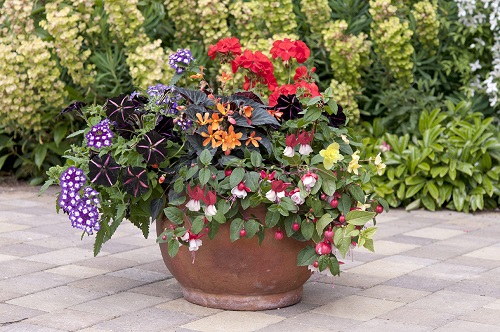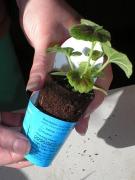Our Products

KinderGarden Plants
Our range of Seedlings and Young Plants has been carefully selected to provide you with the most comprehensive collection of the best new and traditional varieties from around the world. Germinated or rooted in high tech professional facilities ensures the very best start in life, providing strong healthy plants that, with just a little support from you, will grow on to reward you all summer long. A good choice is one thing and healthy plants are essential but, at KinderGarden Plants we want to be sure that your plants will provide you with that unforgettable display that’s why we have selected only those varieties with proven garden performance.

Quality Plants
The best garden displays start with the best quality plants. Grown in our high tech facility ensures the best possible start. Grown in our revolutionary “No Pot” glue plug means easy planting without root disturbance which means quick establishment and healthy plants.
Growing on
Follow these basic guidelines and gain the most from your plants.
All our young plants are supplied ready for potting on so that they can grow and mature in a sheltered environment before being planted out when all danger of Frost has passed. This could be a greenhouse, a conservatory or a windowsill. The ideal growing conditions are plenty of natural light and a temperature of 16 to 18°C. If this is not possible supply the best conditions you can and turn the plants regularly to avoid them becoming stretched.
Plants must be protected from frosts and cold weather at all times. Do not place these tender plants outside until all danger of frost has passed.
Plug plants need to be potted on into larger cell trays or individually into small pots using a good quality compost.
Seedlings and 20 cell plug packs are best planted into bedding tray inserts or 7-9cm pots.
Starter & Premium Plants are best planted into 9-13 cm pots or can be planted directly into baskets and containers as long as they can be protected from frost.
-
Fill the cell trays or pots with compost and lightly firm.
-
Push each young plant out of the sleeve or plug cell from below and lift clear of the tray. Hold the lower leaves, not the stem.
-
Use the dibber to make a similar size hole in the compost and place the young plant into this hole. Note: the top of the compost plug should be level with the compost in the tray or pot.
-
Using the dibber or pencil gently firm the plant in to the compost.
-
Immediately after planting, water the young plants gently using a watering can fitted with a fine rose.
-
Place the plants in a warm, light position but out of direct sun. They must be protected from frost. A temperature of 16 to 20 °C will encourage active growth but good light is also essential. Water regularly to maintain a moist compost but do not allow the plants to stand in water.
-
Grow on and feed with a proprietary liquid feed as per manufactuer's instructions. Plants can be planted out when all danger of frost has passed.
Additional information:
Water: All plants will need watering but avoid over wet conditions. Water sufficiently to ensure the compost is thoroughly moist, do not water again until the surface of the compost has become dry. As the plants mature it is advisable to water under the foliage canopy if possible, this way you will reduce the risk of marking or damaging foliage and flowers.
Feed: This is often neglected and yet it is so easy to reap the rewards. There are several ways in which you can feed your plants and many products to select from.
The two main types are:
-
Slow release fertiliser – added to compost, either incorporating it into the compost or spreading on the surface. Used mainly when planting in to the basket, container or garden bed. – Provides a released measure of feed throughout the summer.
-
Liquid Feed. Normally purchased as dry crystals these are dissolved in water and the feed is given as you water. This feed can be used through all stages of the plants development.
Maintenance: Your display will be further enhanced if you take time to check your plants over occasionally. Should you spot any pests be sure to take action using proprietary treatment. Removal of any dead flower heads will encourage further flowering.
To find out how to plant a basket or container please see our How To Plant Pages.